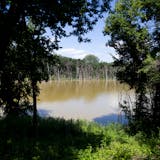A trial now underway in St. Paul will have big implications for the Minnesota federal gang crackdown as prosecutors try to answer a key question: Can street gangs such as the Bloods be taken down with the same tools used to dismantle East Coast mob families generations ago?
For the first time since U.S. Attorney Andrew Luger started targeting gang crimes in Minneapolis — so far yielding charges against at least 80 people — a novel strategy to deploy racketeering conspiracy charges in such cases is being tested in front of a jury.
The government is using the federal Racketeer Influenced and Corrupt Organizations (RICO) statute to tie together a series of crimes — occurring years apart — that it alleges were carried out to enrich the Minneapolis chapter of the Bloods. Another RICO trial targeting the north Minneapolis Highs gang is expected to follow next year.
“These rivalries are serious — not a group of buddies who just like red T-shirts and hand signs,” Assistant U.S. Attorney Kristian Weir told jurors in St. Paul late last week, referring to the preferred color worn by Bloods members. “These feuds mean something real and they’re deadly serious.”
Desean James Solomon, 34, of Richfield is already serving a 36½-year state prison term for killing a man during a shootout in 2020 outside the 200 Club in north Minneapolis. He’s the first to take federal RICO conspiracy charges to trial since being indicted last year. Solomon is also charged with two counts of using and carrying a firearm during a violent crime that led to a death. If convicted, he faces a possible sentence of life in prison.
Also on trial are Michael Allen Burrell, 44, of St. Paul and Leontawan Lentez Holt, 26, of Minneapolis — each charged with using and carrying a firearm during a violent crime that involved death. Burrell is charged in connection with the 200 Club shooting, and Holt is charged with Solomon based on a 2022 killing. The latter shooting started with an assault inside the Williams Pub in Minneapolis’ Uptown neighborhood.
Burrell is the older brother of Myon Burrell, whose life sentence for murder was commuted in 2020 after he spent nearly two decades in prison. Prosecutors say the 200 Club shootout started when Michael Burrell and Solomon confronted a man who testified against Myon Burrell at both trials held in the murder of 11-year-old Tyesha Edwards in the mid-2000s.
Thomas Plunkett, Solomon’s attorney, is casting doubt on whether Solomon fired the shot that killed Marcus Banks during the June 2020 shootout. He told jurors that they would not agree that Solomon committed first-degree premeditated murder, which would undercut the government’s racketeering case against him.


